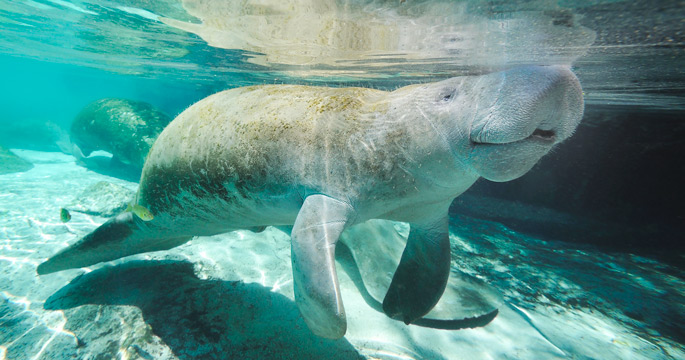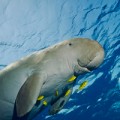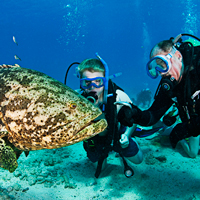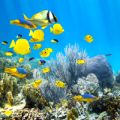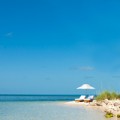From shore side observation to in-water viewing, these are your best bets for a meeting with a sea cow
The first time you see a manatee, it’s amazing. And even after hundreds of encounters, I still get excited when I come across one of these huge “sea cows.” They can be 10 feet long and weigh more than a ton, but they are harmless to humans. In fact, it’s humans who pose a threat to the manatee when we don’t treat them with respect. Fortunately, there are responsible ways to interact with wild manatees, and plenty of sites all across Florida where they can be found. Here are a few of my favorite places to watch them, get up close and even swim with them.
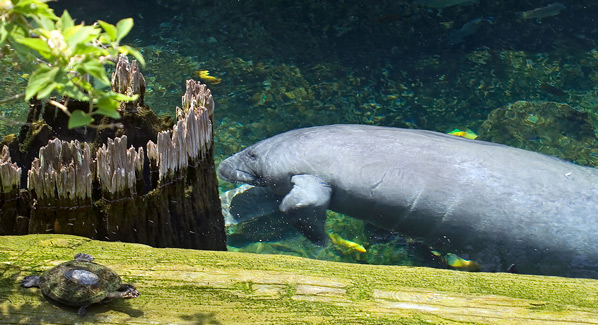
Central Florida’s Blue Springs State Park provides a refuge for manatees escaping the colder waters of the St. Johns River. In winter, the spring run may host hundreds of these animals. Photo: Stephen Meese/iStock
From Shore
When wintertime water temperatures drop below 70, manatees look for a place to warm up. They find it in the constant 72-degree water that flows from Florida’s underground springs. A great place for manatee watching is Blue Spring State Park, which is about an hour’s drive north of Orlando’s theme parks. I make at least one trip a year to Blue Springs, and never get tired of seeing as many as 100 of the big sea cows gathered in the clear waters of the preserve. In addition to natural springs, manatees have learned to take advantage of the warm water discharge from coastal power plants. Several utility companies have created viewing stations next to these discharge lagoons, and two of the best are Tampa Electric’s viewing station at Apollo Beach, and the brand new $5-million Manatee Lagoon visitor’s center in Riviera Beach. At these sites, winter months are best, but a few manatees always seem to hang around throughout the year.
On The Water
When they aren’t bunching up to escape winter cold, manatee spread out into rivers, bays and lagoons all around Florida. The areas where they are most often seen become designated manatee zones, with posted speed limits to prevent powerboats from running over these slow moving mammals. I always watch out for manatees when driving a powerboat, and keep my distance. For an up-close encounter, I use a kayak. By loosing the engine noise and moving slower, paddlers stand a greater chance of meeting up with a manatee. One of the best places to do this is the Jupiter Inlet Aquatic Preserve, which is just a few miles north of the Palm Beach area. Other good manatee paddles include the Weeki Wachee spring run, Crystal River and the mangrove islands of the Florida Keys—especially the wooded shores of Key Largo’s Tarpon Bay and the backcountry shallows near Key West. Kayaks are available for rent in all these areas, and most offer guided tours.
In The Water
Back in the day, when there were more manatees and fewer Floridians, there were a number of places where you could get in the water with manatees. To prevent hordes of swimmers from driving the sea cows from their favorite habitats, many of these sites are now designated preserves, with no swimming allowed. Two exceptions to this are the coastal springs at Crystal River and Homosassa, which are about an hour north of Tampa. A number of tour companies run sanctioned manatee encounter programs that allow snorkelers to get a first-hand look at the animals in their natural habitat. Winter months are the best, and because things can get chilly—at least by Florida standards—tour companies will usually supply wetsuits along with snorkel gear. Aside from these sites, there’s always a chance of a manatee swim-by when you are swimming or snorkeling. I’ve been treated to a number of these visits over the years, and always keep an eye out for the swirl of a manatee’s tail, or their car-size underwater profiles.

